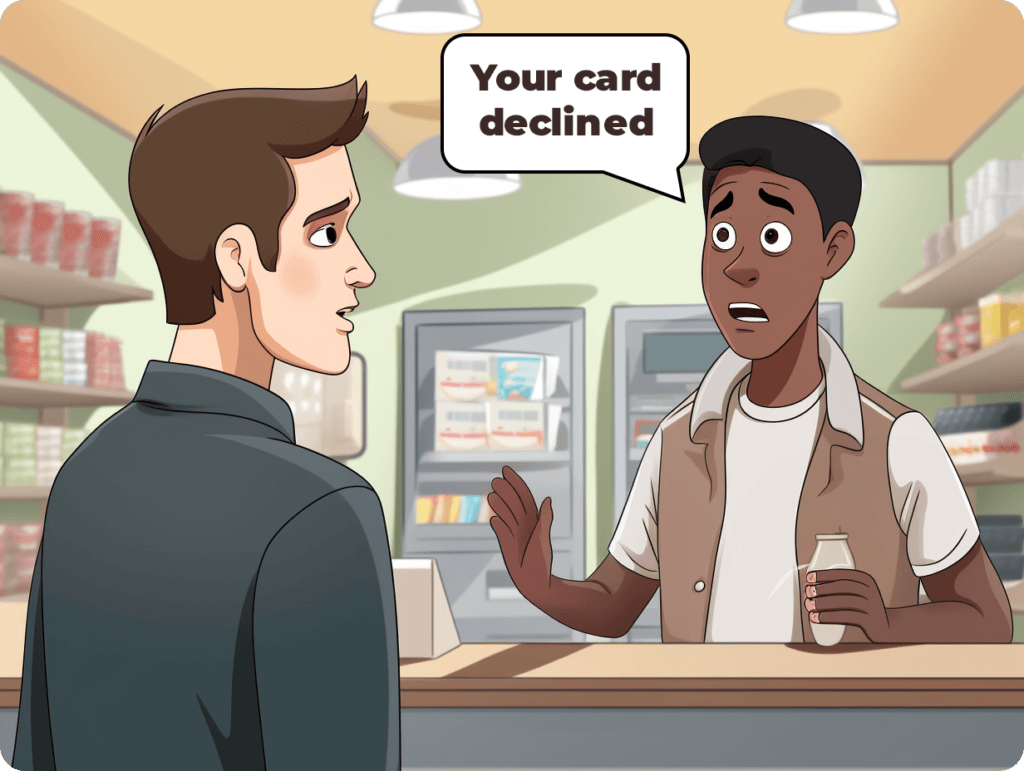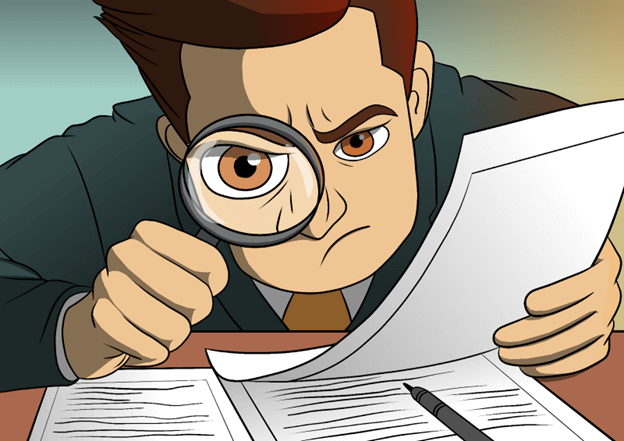- Blogs
- /
- 4 Techniques for Mastering Pay-Per-Delete Credit Repair
4 Techniques for Mastering Pay-Per-Delete Credit Repair

Summary
Have you ever felt like your credit report is holding you back from achieving your financial goals? Maybe you’ve worked hard to improve your credit score, only to find that past mistakes continue to haunt you.
Enter Pay-Per-Delete credit repair (PPD). Pay-per-delete is a game-changer in the realm of credit repair.
Why? Because pay-per-delete offers a human touch, a direct line of communication between you and your creditors or collection agencies. And this communication is a chance to reclaim control over your credit.
So, to help you make the best of this opportunity, we’ll show you how pay-per-delete credit repair can empower you to take charge of your credit journey.
From understanding the basics to mastering negotiation strategies, we’ll give you the knowledge and confidence to navigate the murky waters of credit repair with clarity.
Let’s explore!
Key Takeaways
- Collections happen when creditors hand over the responsibility of collecting debts to third-party agencies due to non-payment.
- Ensure you understand the collection agency’s policies before negotiating a pay-for-delete agreement.
- Most collection agencies don’t accept pay-per-delete negotiations.
- Some challenges with pay-per-delete negotiations include resistance from collection agencies, limited success rates, and lack of legal protection.
- Debt settlement, debt consolidation, credit repair, and credit counseling are great alternatives to pay-per-delete agreements.
- Always manage your expectations when negotiating a pay-per-delete.
What is Pay-Per-Delete Credit Repair?

Pay-for-delete is a technique used in credit repair to remove negative items from your credit report by paying the creditor to delete the entry. This method is unique because it focuses on negotiating with creditors to remove negative marks in exchange for payment.
Pay-per-delete helps you bypass the red tape associated with other credit repair strategies and personally engage with lenders. This often leads to a quicker improvement in your credit scores and creditworthiness.
One of the best things about pay-per-delete credit repair is that it lets you target and remove specific negative marks on your credit report. This approach streamlines the credit repair process, making resolving items like collections, charge-offs, and late payments easier.
3 Easy Steps to Mastering Pay-per-delete Credit Repair

Step 1: Prepare For Negotiation
A. Know Your Finances
Before initiating negotiations with your lenders or collection agency, closely examine your finances and understand your budget.
But don’t stop there. Pay attention to your income, expenses, and other outstanding debts you need to pay off. This will help determine how much you can afford to offer the collection agency.
Also, ensure you get a copy of your credit report and carefully review the details of the collection account in question. Focus on spotting any inaccuracies or discrepancies you can leverage during negotiations.
Understanding the specifics of the debt puts you in a better position to negotiate with knowledge and strength.
B. Prepare Your Offer
Now that you clearly understand your budget, it’s time to decide how much you will offer to settle the account. Your goal is to negotiate a payment amount lower than the total amount owed, as collection agencies may be more inclined to accept a reduced payment to resolve the debt.
We suggest you start your offer with a payment of 25% to 30% of your owed amount. That said, you can expect the collection agencies to push back and offer a counteroffer during negotiation.
Speaking of negotiations, you should prepare your response to any objections or counteroffers the collection agency may make.
Practice communicating your offer and why the collection agency should consider accepting it. Getting these right can improve your chances of reaching an agreement.
Step 2: Start Negotiating Your Pay-for-Delete Agreement
Before contacting your creditors, you need to ensure you’ve gathered every document related to the debt.
Gather any document that proves your financial hardship, payment history, or evidence of debt inaccuracies. This can strengthen your case and boost your chances of reaching a favorable settlement.
Reach out to the collection agency via phone or mail to start negotiations. If you don’t know the collection agency’s name and address, review your credit report and identify the collection account you want to pay-to-delete. The collection agency’s name and contact information should be listed alongside the account details.
When contacting the collection agency by mail, writing in a precise and professional tone is the best way to craft an effective pay-for-delete letter. Doing so allows you to communicate your message in a way that’s easy to understand.
That said, here’s how to craft an excellent pay-for-delete credit repair letter:
A. How to Craft a Pay-for-Delete Credit Repair Letter
1. Start with a Polite Greeting
The best way to set a positive tone for your letter is to begin with a pleasant greeting addressed to your lender or collection agency.
2. Provide Personal Information
Introduce yourself and provide your personal information. This can include your full name, address, and account number associated with the debt. This will help your lender or collector identify your account.
3. Explain the Situation
Now’s the time to explain the reason for your letter. Tell them about the debt you’re addressing and mention that you’re seeking a pay-for-delete arrangement.
4. Offer to Pay
Once you’ve explained your situation, express your willingness to settle the debt fully. Tell them how much you’re offering to pay. Yes, you can negotiate the amount, but be realistic in your offer.
5. Ask for Deletion
Politely request that the creditor or collection agency delete the negative information from your credit report in exchange for payment. Also, emphasize that this action would help you improve your credit score and financial standing.
6. Provide Payment Details
Outline how you plan to make the payment, whether by check, money order, or another method. Include the payment amount, due date, and specific instructions for payment processing.
7. Ask for Confirmation
Ask for a written confirmation of the pay-for-delete agreement once the payment has been received and the negative information has been removed from your credit report. This helps ensure that both parties are clear on the terms of the agreement.
8. Express Gratitude
End your letter with a polite thank-you message appreciating them for their attention to your request.
9. Proofread and Edit
Before sending the letter, carefully review it for any errors or inconsistencies. Ensure that the language is clear, respectful, and professional throughout. The last thing you want is to send a letter filled with mistakes and insulting language.
10. Send via Certified Mail
Send the letter via certified mail with a return receipt requested. This provides proof of delivery and ensures that your communication is taken seriously.
Remember to keep copies of all correspondence for your records. A well-written and polite pay-for-delete letter increases the likelihood of a positive answer from the creditor or collection agency.
B. Keep Detailed Records
Keep detailed records of all communication with the collection agency, including phone calls, letters, and emails. Document any agreements or concessions made during negotiations to ensure clarity and accountability. A paper trail will be handy if any disputes arise later.
Once you’ve reached a verbal agreement with the collection agency, get a written agreement that outlines the terms of the pay-for-delete arrangement.
Before paying, review the agreement and ensure it accurately reflects your negotiated terms. Ensure the agreement includes the item to be deleted from your credit report and the timeline for its removal.
Once you’ve got the written agreement, you can fulfill your end of the agreement by making the agreed-upon payment to the collection agency.
Monitor your credit report closely to ensure that the negative item is removed as promised. If any challenges arise or the collection agency fails to uphold their end of the agreement, follow up promptly and take appropriate action to resolve the issue.
Step 4: Follow Up
A. Contact the Collection Agency
Start by reviewing the terms of your agreement with the collection agency. Ensure you’ve met all the conditions outlined in the agreement, like making the payments within the specified timeframe.
Once you’re sure you’ve kept your end of the agreement, but the negative item is still on your report, contact the collection agency. Remind them of your agreement, politely inquire about the deletion status, and ask why there’s a delay.
However, if the collection agency claims they’ve fulfilled their end of the agreement but the negative item remains on your credit report, ask for documentation to support their assertion. Also, ask for written confirmation or proof that they have reported the deletion to the credit bureaus.
B. Contact the CFPB
Consider escalating the issue if the collection agency ignores your requests or refuses to honor the agreement. You can file a complaint with the Consumer Financial Protection Bureau (CFPB) or your state’s attorney general’s office.
You can support your case by providing documentation of the agreement and any communications with the collection agency.
But if all your attempts to resolve the issue directly with the collection agency are unsuccessful, consider getting legal advice from a consumer rights attorney.
These lawyers can advise you on your rights and options for recourse, including the possibility of taking legal action against the collection agency for breach of contract or violating consumer protection laws.
5 Best Practices and Tips for Success
1. Be Prepared and Informed
Before diving in, take time to understand your rights under the law. Familiarize yourself with the Fair Credit Reporting Act (FCRA) and Fair Debt Collection Practices Act (FDCPA) to ensure you’re on solid ground.
2. Offer a Reasonable Settlement
When proposing a settlement, aim for a fair and reasonable number for you and the collection agency. It’s all about finding that sweet spot where everyone walks away feeling okay about the deal. The ideal range is between 25% and 50% of the original debt.
3. Communicate Clearly and Professionally
When negotiating, always remember that communication is vital. Stay calm, polite, and professional throughout your interactions with the collection agency. Respect goes a long way toward getting them to work with you.
4. Get Everything in Writing
Don’t rely on handshake agreements. Insist on getting everything in writing before you hand over any cash. Having a paper trail protects you and ensures everyone sticks to the deal.
5. Always Follow Up and Confirm the Deletion
Once you’ve paid, follow up with the collection agency to ensure they’re keeping their end of the bargain. Ask for proof that they’ve removed the negative item from your credit report, and keep an eye on your report to ensure it’s gone for good.
Always remember negotiating this kind of agreement is about finding a middle ground where you and the collection agency can work together for a positive outcome.
5 Common Challenges and How to Overcome Them

1. Resistance From Collection Agencies
When you approach a collection agency with the offer of a pay-for-delete agreement, you might encounter resistance. That’s because some agencies have strict policies against pay-per-delete arrangements. This is often because of industry regulations or internal guidelines.
To make matters worse, even if you offer to settle the debt in full, they may still refuse to remove the negative item from your credit report, citing company policy or legal constraints.
2. Low Success Rates
Negotiating a pay-for-delete agreement can be a delicate dance with uncertain outcomes. Success rates vary depending on factors like the collection agency, the amount owed, and your negotiation skills.
One thing we often see is that even if you strike a deal, the agency may not always follow through on its promise to remove the negative item from your credit report.
3. Isn’t Legally Protected
One of the challenges of pay-for-delete agreements is the lack of explicit legal protection. Although they aren’t illegal, there is no law requiring collection agencies to agree to such arrangements.
This means you’re at the mercy of their goodwill, with no legal recourse if they refuse to honor the terms of the agreement.
4. Possible Financial Constraints
Paying a lump sum to settle a debt can be challenging, especially if you’re facing financial problems.
Negotiating a lower settlement amount or setting up a payment plan may offer alternatives. But, they can prolong the process and have their uncertainties.
Also, even if you pay off the debt, the collection agency may not uphold its end of the agreement.
5. Impacts Your Credit Score
Other negative factors may still affect your credit score even if you successfully negotiate a pay-for-delete and the negative item gets removed from your report.
Factors like late payments and bankruptcies can continue to affect your creditworthiness. And yes, they’d continue to limit the overall impact of the pay-for-delete agreement on your credit score.
It’s vital to manage your expectations and understand that pay-for-delete can be a valuable tool for improving your credit. But it’s not a magic bullet and may not increase your credit score.
Is Pay for Delete Worth it?
Considering these factors before deciding whether making a pay-per-delete agreement is the best way to know if paying for delete is your best choice.
1. Effects on Your Credit Score
The best way to know if a pay-for-delete agreement would be best for you is to consider the effect of removing the negative item on your credit score. If removing the harmful item significantly improves your score, go ahead with a pay-for-delete agreement.
Doing this could open you to better financial opportunities like low-interest loans and credit cards.
2. Consider the Cost and Benefit
Before considering a pay-for-delete agreement, weigh the cost of settling the debt against the potential improvement in your credit score.
Consider how much you owe, the current impact on your score, the time you’d spend drafting a pay-for-delete letter, and following up after you’ve made payments. If you’re comfortable with all this, a pay-for-delete agreement may be your right choice.
3. Negotiation Skills
Success in securing a pay-for-delete agreement often depends on your negotiation skills and your ability to talk well with creditors or collections agencies. Opting for a pay-for-delete agreement may be worth it if you’re confident in your negotiating abilities.
Three Great Alternatives to Pay-per-Delete Credit Repair
Debt Consolidation
Debt consolidation combines many debts into a single loan with a lower interest rate. You can do this by taking out a personal loan, balance transfer credit card, or home equity loan.
Combining many debts into one can simplify your repayment. But that’s not all. It can also lower your monthly payments and interest rates while helping you avoid missed payments and late fees.
But, before choosing a debt consolidation plan, research and compare consolidation options to find the best fit for your needs. Only apply for a consolidation loan or credit card with favorable terms, then use the funds to pay off your debts.
Credit Counselling
This involves working with a certified credit counselor to create a custom plan for managing debt and improving your financial situation.
How does this work? It’s easy. All you need to do is schedule a consultation with a credit counseling agency accredited by the National Foundation for Credit Counseling (NFCC) or the Financial Counseling Association of America (FCAA).
The counselor will review your financial situation. Once that’s done, they’ll give you custom advice to help you budget and create a debt repayment plan.
Although credit counseling can be a valuable option, watch out for agencies that charge high fees or make unrealistic promises. Ensure you research and verify the credentials of any credit counseling agency before working with them.
Debt Avalanche and Snowball
The debt avalanche and debt snowball methods are two popular strategies for paying off debt systematically.
With the debt avalanche method, you first focus on paying off debts with the highest interest rates while making minimum payments on other debts. Once the highest-interest debt is paid off, allocate those funds to the next highest-interest debt, and so on.
This debt repayment method minimizes interest payments over time, saves money, and helps you become debt-free faster.
On the other hand, the debt snowball method focuses on paying off debts with the smallest balances first. This method motivates you to pay off your debts one by one.
As you progress through the debt repayment, the snowball method lets you build momentum to tackle more enormous debts with increasing confidence and determination.
In Conclusion
Mastering pay-per-delete credit repair techniques can be a game-changer for your financial well-being. Crafting effective letters, understanding optimal agreement scenarios, and utilizing communication techniques are all critical components that can help you navigate the process successfully.
By staying informed about credit report insights and leveraging technology in credit repair, you empower yourself to take control of your credit health and minimize the psychological impact of the journey.
As you continue your credit repair journey, remember that maintaining credit health is ongoing. Stay proactive, persistent, and informed to achieve your financial goals. Implementing the strategies we’ve discussed will equip you with the tools you need to master pay-per-delete credit repair effectively.
FAQs
What are the critical components of a pay-for-delete agreement?
A pay-for-delete agreement typically includes the settlement amount, deletion of negative items from your credit report, and confirmation of the agreement in writing. Ensure all terms are clearly outlined before proceeding.
How can I craft effective letters for pay-per-delete credit repair negotiations?
Craft concise and professional letters outlining your situation, proposing solutions, and requesting a pay-for-delete arrangement.
Clearly state your intentions, provide necessary details, and maintain a respectful tone throughout the correspondence.
What should I do if my pay-for-delete request gets rejected?
If your pay-for-delete request gets rejected, consider negotiating further or exploring alternative credit repair strategies. Stay persistent but respectful in communicating with creditors or collection agencies to find a mutually beneficial solution.
How can technology assist in the credit repair process?
Technology tools such as credit monitoring apps, dispute resolution platforms, and financial management software can streamline credit repair efforts. Utilize these resources to track progress, manage disputes efficiently, and stay organized.
What are some communication techniques that can enhance credit repair negotiations?
Effective communication techniques include active listening, maintaining a calm demeanor, asking clarifying questions, and expressing gratitude for any concessions made by creditors.
Clear and respectful communication can help build rapport and increase the likelihood of successful negotiations.
Our Latest Blogs:

ThisIsJohnWilliams

ThisIsJohnWilliams
FREE Strategy Session to Fix Your Credit Blogs / Facebook Twitter Linkedin Instagram Share Summary Discovering the keys to...

ThisIsJohnWilliams
FREE Strategy Session to Fix Your Credit Blogs / In today’s digitally interconnected world, we all face the danger...

ThisIsJohnWilliams
FREE Strategy Session to Fix Your Credit Blogs / Facebook Twitter Linkedin Instagram Share Summary Did you know that...

ThisIsJohnWilliams






